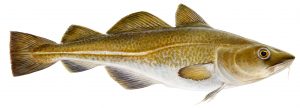
Cod
Cod is “the fish” in Iceland. It is by far the most important marine resource in Icelandic waters. Its economic importance has only briefly been surpassed by herring in the 20th century and possibly Greenland shark in the 19th. The cod is also a large, fecund, greedy and rather fast growing fish and therefore has great impact on other marine species in Icelandic waters. The cod can grow quite large; the largest individual measured in Icelandic waters was 186 cm long and 17 years old. Common size in catches is much smaller, or in the range of 45 to 85 cm long in most fishing gear. This corresponds to roughly 4 to 7 year old and 1 to 4 kg fish.
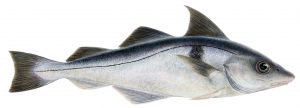
Haddock
The haddock is a rather large codfish, usual size in catches is between 50 and 65 cm long, but the largest individual caught in Icelandic waters measured 112 cm. It is found in abundance all around Iceland. During cold periods it is rather rare in the colder waters off the north coast, but in warmer periods it can be more common in the north than in the south. Mostly it occurs over soft bottoms at depths between 10 and 200 m.

Catfish
The catfish is a large sized, rather long fish, usually around 50 to 60 cm long, but the largest individual caught in Icelandic waters measured at 125 cm. It is found all around Iceland, but is most common off Vestfirdir (West Fjords) peninsula in the west. It mostly occurs on mud or sand bottoms at depths between 40 to 200 m.

Plaice
Plaice is a medium sized flatfish. It has a smooth skin as opposed to, for example, dab and long rough dab. It is easily recognized by the red or orange spots on the otherwise dark back, the underside is white. The maximum recorded size in Icelandic waters is 85 cm, but the usual size in catches is from 30 to 50 cm.Plaice is common all around Iceland from the seashore to 200 m depth, on sandy or muddy bottoms.

Golden Redfish
The golden redfish is one of the most common and commercially important fish in Icelandic waters. It is commonly from 35 to 40 cm long in catches, but exceptionally large individuals of up to 100 cm and 15 kg have been measured. These huge individuals are often called centennial redfishes as they are probably very old. It is however possible that these very large redfishes belong to a different stock, or even species, than the common golden redfish.
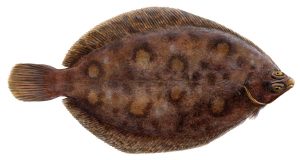
Lemon sole
The lemon sole is a medium sized rather thickset flatfish, usually around 30 cm long, but the largest individual caught in Icelandic waters measured at 63 cm. It is found all around Iceland, but is much rarer in the colder waters north and east of the country. Mostly it occurs on rocky or sandy bottoms at depths between 50 to 350m.
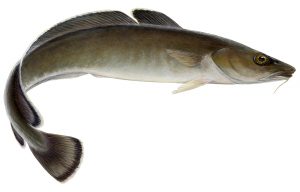
Ling
The Ling can reach a very large size, the largest on records was 212 cm long. It occurs all around the country but is very rare in the colder waters north and east of Iceland. It is found over a wide depth range, spanning from 15 to 1000 m depth.
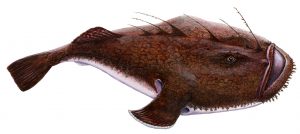
Monkfish
The Monkfish is not the most beautiful fish there is, his lower jaw goes over his upper jaw and he has a very wide mouth that covers his whole head.
The Monkfish is found all around Iceland but mostly in the south or west.
The male Monkfish is 20-30% smaller than the female and the average size is around 60-80cm long.
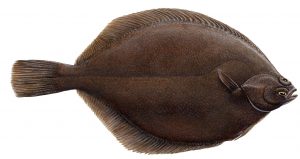
Dab
The Dab is a small flatfish, typically 20 to 35cm in length and under 1kg, they are a shallow-water fish and are rarely found at depths greater than 120m. The Dab is found mostly in the south part of Iceland.
Females grow faster and live longer than males, typically reaching around 14 years of age.

Greys sole / Witch flounder
The Grey Sole is a long and thin flatfish. It is found all around Iceland but mostly in the south and west.
It is a demersal species found at 25 – 500 m depth but is most common at 50 -300 m on a sandy or muddy substrate.
Females grow larger than males, only a small proportion of males become longer than 40 cm, as compared to 45 cm for females.
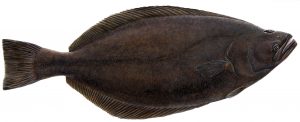
Black halibut
The Black halibut is a big flatfish that can get up to 1,2m in length. It is dark grey on both sides unlike other flatfishes. It is mostly caught at around 400m in waters with temperatures from 1-4 °C.
